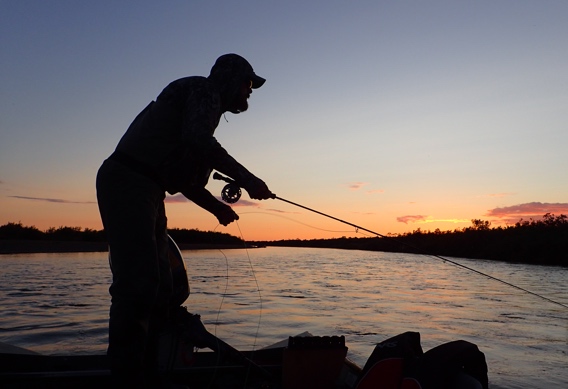It’s currently baseball season. For those who truly understand the game of baseball, it’s not always about the long ball. The games within the game are where the nitty-gritty and the good stuff about baseball make it fun and more enjoyable. Understanding this will make you a better enjoy the game.
The same applies to fly fishing. Sometimes you have to look beyond what’s right in front of you. Instead of looking to hit the humdinger all the time, looking to see what happens beyond your line goes a long way with fly fishing. Once you see it, you’ll know it and enjoy fly fishing that much more. It’s like a good steak. You can’t always see the seasonings, but you know it’s there once you take a bite. In the end, you’ll be a better angler.

Let’s face it, no matter how good your eyes are, there are plenty of times while fishing, whether with streamers or nymphs, when you can’t see your fly. Perhaps the water is too dirty, too deep, or you momentarily lost track of the fly. It just happens. However, that shouldn’t keep you from tracking your fly through the water or at least maintaining an idea of where your fly is at all times.
Fish Beyond Your Fly Line
One of the primary things many anglers do when they can’t see their fly relies on the end of the fly line as a strike indicator or focus point. This is an excellent and strongly recommended method to detect when a fish eats your fly. However, a common issue we always see is that while focusing exclusively on the fly line, some anglers will fish through a piece of water where they think their fly is tracking while their fly is actually working way behind or ahead of their intended target point.
Instead, watch your fly land and do your best to imagine where your fly is as you move it through a piece of water. Take into account the length of your leader and try to identify and track where that point would be from the end of your fly line throughout the retrieve. Therefore, by “knowing” where your fly is as you move it through the water, you will better be able to fish through holes, around rocks, or any other type of water Walter may be hiding in.
Have you ever wondered how your guide always seems to know when to yell, “Set!” even when you swear you didn’t see (or feel) anything out of the ordinary? Well, if you would like to know a little secret about the industry, it’s pretty common that we don’t see the fly at all! However, by tracking the expected location of the fly as it moves through the water, it’s not uncommon to see flashes, boils, or the bright white of a fish’s mouth as it opens and closes. All of which means, “Set!”
In other words, to become a part of the ten percent of anglers who catch ninety percent of the fish, the moment between when the fish eats your fly and when you feel the pull is extremely important. Pay attention beyond the tip of your fly line. Watch for that mouth to open or for that subtle push of water, and you’ll only increase your ability to catch more fish.
Leave a Reply